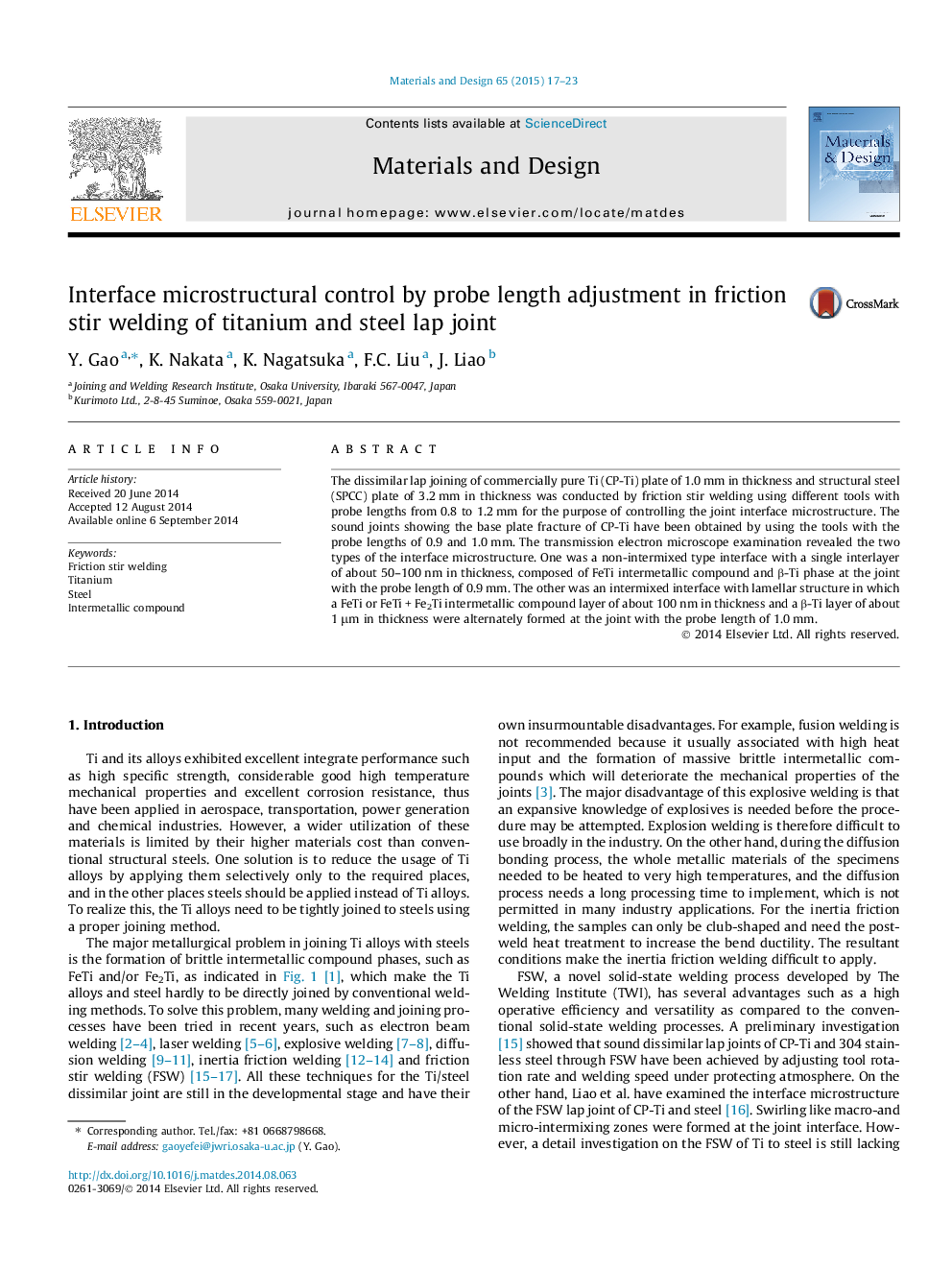| Article ID | Journal | Published Year | Pages | File Type |
|---|---|---|---|---|
| 828775 | Materials & Design (1980-2015) | 2015 | 7 Pages |
•The titanium and steel were tightly bonded together.•The joint interface microstructure was well controlled by parameter adjustment.•Both of non-intermixed and intermixed joint interfaces were observed.•The joint interfaces were consisted of β-Ti and Fe–Ti intermetallic compound.
The dissimilar lap joining of commercially pure Ti (CP-Ti) plate of 1.0 mm in thickness and structural steel (SPCC) plate of 3.2 mm in thickness was conducted by friction stir welding using different tools with probe lengths from 0.8 to 1.2 mm for the purpose of controlling the joint interface microstructure. The sound joints showing the base plate fracture of CP-Ti have been obtained by using the tools with the probe lengths of 0.9 and 1.0 mm. The transmission electron microscope examination revealed the two types of the interface microstructure. One was a non-intermixed type interface with a single interlayer of about 50–100 nm in thickness, composed of FeTi intermetallic compound and β-Ti phase at the joint with the probe length of 0.9 mm. The other was an intermixed interface with lamellar structure in which a FeTi or FeTi + Fe2Ti intermetallic compound layer of about 100 nm in thickness and a β-Ti layer of about 1 μm in thickness were alternately formed at the joint with the probe length of 1.0 mm.
